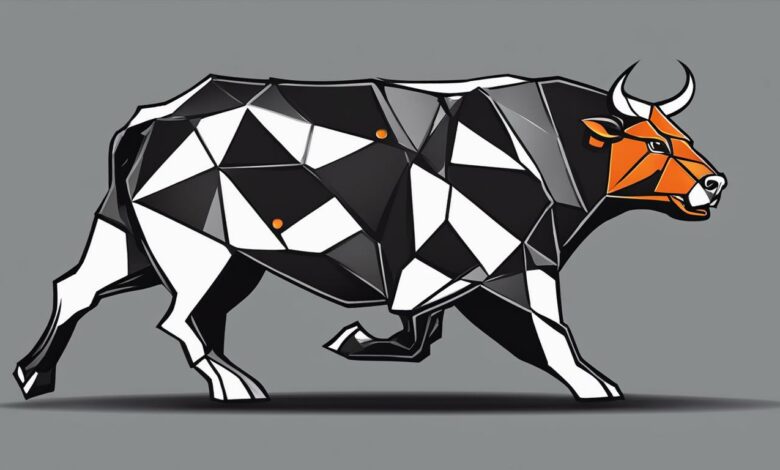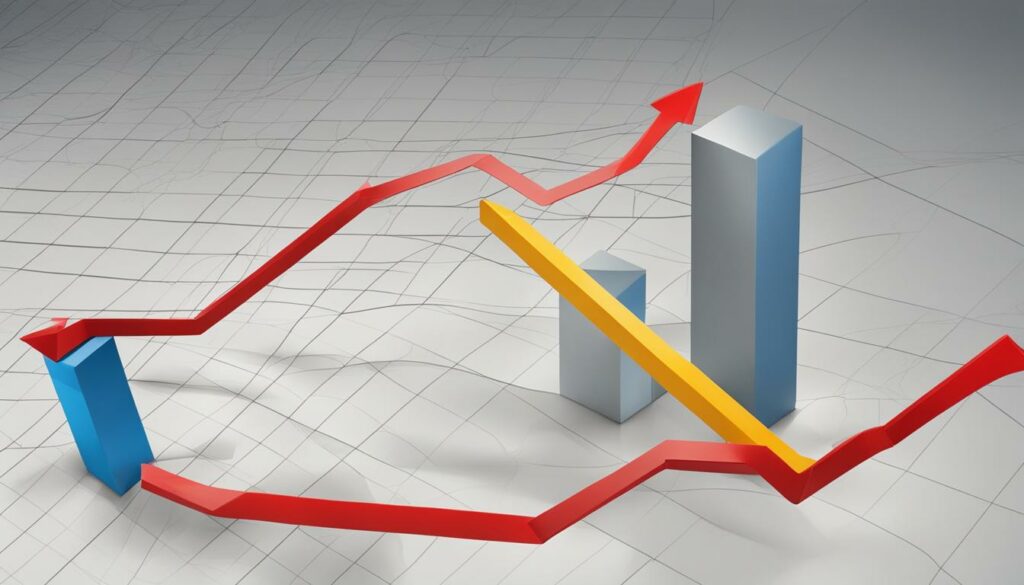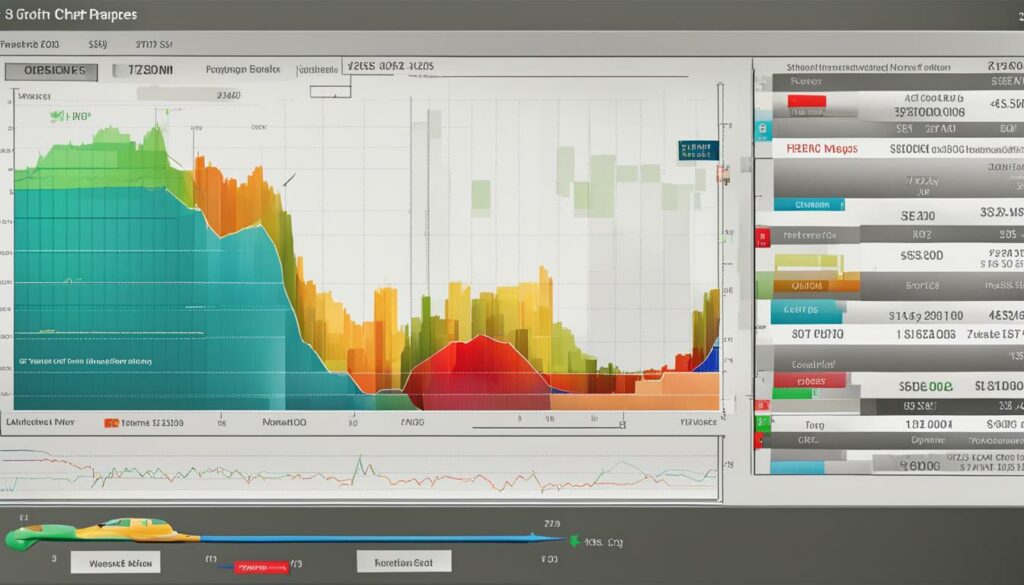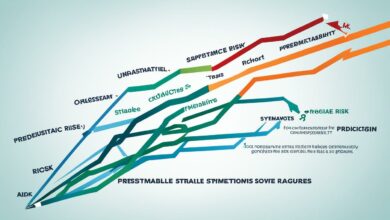What Is A Strike Price?

Grasping the fundamentals of options trading starts with understanding the strike price definition. In the realm of financial markets, the strike price meaning is the cornerstone of any option contract, whether you’re dealing with a call option or a put option. It represents a specified price level, crucial for investors in determining their potential for profit or loss.
The strike price plays a decisive role, allowing the holder of an option to buy or sell the underlying asset at this fixed price, which echoes directly into the strategy employed during the trading process. It is not just a number; it is a critical threshold that sets in motion the dynamics of options trading, impacting how contracts are valued and ultimately, how trades are executed.
Key Takeaways
- The strike price is an established fixed price at which an option can be exercised.
- In options trading, understanding the strike price is fundamental for strategizing.
- An option’s moneyness—its status as in-the-money, at-the-money, or out-of-the-money—is rooted in its strike price.
- A call option grants the right to buy the underlying asset at the strike price, whereas a put option allows for selling.
- The intrinsic and extrinsic values of an option contract are affected by the chosen strike price.
Setting the Strike: Strike Price Selection Factors
When deciding on the appropriate strike price for an options contract, investors must meticulously consider several pivotal elements. These include assessing the current level of market volatility, understanding the intricacies of option expiration dates, and aligning option choices with one’s personal risk tolerance. The correct calibration of these factors contributes significantly to option pricing strategy and the potential returns on investment.
Assessing Market Volatility and Its Impact on Strike Price
Market volatility plays a central role in the realm of options trading. The fluctuations in the financial markets affect option valuation, particularly through the metric known as implied volatility, which reflects investor predictions of how much a stock will move in the future. This expectation of volatility is baked into the option premium, and options with higher implied volatility are priced more expensively, defending against the likelihood of substantial market moves before expiration.
Expiration Date’s Influence on Choosing a Strike Price
The expiration date of an option is a definitive factor in the makeup of its price. Options that hold more time until expiration carry a higher premium, providing a greater window within which the underlying asset might reach a favorable price. As this expiration date nears, options experience “time decay,” which can erode their value, thus influencing an investor’s strike price decision tied to time considerations.
Investor Risk Tolerance and Strike Price Decision
An investor’s risk tolerance is the final decisive element in choosing a strike price. Consumers with lower risk tolerance might prefer options that are in-the-money (ITM) or at-the-money (ATM), which tend to have a higher likelihood of profitability, albeit with lower potential returns. Conversely, more aggressive investors might favor out-of-the-money (OTM) options that provide higher leverage at a more affordable premium, despite the increased risk of losing the investment should the market not move as anticipated.
| Market Condition | Implied Volatility | Risk Tolerance | Premium | Example Option Type |
|---|---|---|---|---|
| Stable | Low | Conservative | Lower | ATM or ITM Call/Put |
| Uncertain | High | Average | Moderate | ITM or Near ITM Call/Put |
| Volatile | Very High | Aggressive | Higher | OTM Call/Put |

Strategic Moves: Exercising Options at Strike Price
Exercising options represents a critical decision in options trading, influenced by meticulous evaluation of the strike price against the current market trends of the underlying assets. As financial instruments, options allow investors strategic leverage, and understanding when to harness this power is essential for capitalizing on market opportunities. Below, we dissect the strategic timing for engaging with these derivative contracts, focusing on both call and put options.
When to Exercise a Call Option
Investors with call options aim to anticipate market surges above the call options strike price. Determining when to exercise a call option hinges on several factors. However, the primary indicator is the surpassing of the strike price by the market value, creating intrinsic value and indicating a profitable opportunity to exercise the option.
Optimal Timing for Exercising Put Options
Conversely, the optimal window for exercising put options arises when the underlying security’s market price falls below the put options strike price. This decline beneath the strike price signifies a favourable juncture where a put option holder may exercise to sell, achieving a strategic position to mitigate losses or secure profits amidst downturns.
The Impact of Expiration Dates on Exercising Options
Expiration dates are the ticking clock in options trading, imposing a timeframe for exercising options. As such, they play a pivotal role in influencing an investor’s decision-making process. The closer an in-the-money option gets to its expiration date, the more pressing it becomes for an investor to exercise, lest they forego the built-in value of the option.
| Options Type | Market Condition | Strike Price Status | Action |
|---|---|---|---|
| Call Option | Market Price > Strike Price | Intrinsic Value Present (ITM) | Exercise Option |
| Put Option | Market Price | Intrinsic Value Present (ITM) | Exercise Option |
| Either Option | Approaching Expiration Date | In-the-Money (ITM) | Consider Exercising Before Expiry |

Strike Price vs Stock Price
The relationship between the strike price and the stock price is instrumental in identifying the moneyness of an option. The stock price, or the current trading price of the underlying asset’s shares, relative to the strike price, can signal whether an option is in-the-money (ITM), at-the-money (ATM), or out-of-the-money (OTM). This distinction influences an investor’s decision on whether to execute an option or let it expire.
Strike Price vs Spot Price
Contrasting the strike price with the spot price brings to light the immediate cost of the underlying asset. The spot price is the real-time price at which the asset can be sold or bought, while the strike price is the fixed rate agreed upon within the options contract. These prices can diverge, affecting the potential for an option to be profitable and guiding trading strategies.
| Parameter | Strike Price | Stock Price | Spot Price |
|---|---|---|---|
| Definition | Agreed upon price for option transaction | Current trading price of shares | Real-time purchasing price of asset |
| Impact on Options | Determines contract’s execution threshold | Affects the option’s moneyness status | Can fluctuate, providing immediate transaction opportunities |
| Role in Strategy | Central to option valuation and timing | Critical for investment decisions and timing | Valuable for intraday trading strategies and hedging |
| Influence | Fixed and predetermined in contract | Subject to market dynamics | Indicative of current market sentiment |
Calculation of Strike Prices
Understanding how to accurately calculate strike prices is pivotal for any options trader or investor. It involves an intricate relationship between the market conditions and mathematical models to assess the most appropriate levels at which an option contract can be exercised for both call and put options. As these calculations largely influence the potential returns on investments, it is essential to factor in the various influences that can affect the strike price of an option contract.
Factors Influencing the Calculation
Several key factors impact the strike price calculation for options. The current market price of the underlying asset is the primary consideration, which sets the baseline for the strike price formula. Expected volatility weighs heavily on the option’s cost due to its implications on the future price movements of the underlying security. Time until expiration, current interest rates, and dividends also play significant roles in determining the price at which an option will be struck. Complex financial models, such as the Black-Scholes and Binomial Tree, incorporate these elements to provide a theoretical valuation of options.

Practical Examples and Scenarios
For pragmatic insights into strike price calculations, consider a call option. The call option strike price is selected based on the trader’s forecast of asset price appreciation. If an investor predicts an increase in the stock price of a company, they might select a strike price just above the current market value to capitalize on the expected growth. In contrast, a put option strike price is often set below the current market price if the forecast is bearish and the investor anticipates a decline in the security’s value.
| Option Type | Current Market Price | Strike Price | Time to Expiration | Volatility | Calculated Premium |
|---|---|---|---|---|---|
| Call Option | $50 | $55 | 3 months | High | $5 |
| Put Option | $50 | $45 | 6 months | Medium | $3.50 |
These tables utilize strike price formulas to predict the potential cost – or premium – of options, thereby assisting traders in making informed decisions. The strike price calculation is a delicate balance of quantitative inputs and market speculation, which, when skilfully executed, aligns with both the investor’s objectives and the dynamics of the options market.
Strike Prices in Different Types of Options
Options trading is a nuanced financial practice that brings complexity and strategy to the forefront, especially when it comes to understanding strike prices. Depending on the specific stock option in question, the strike price can take on various roles and signify different opportunities for investors and traders alike.
Call Option and its Connection with Strike Price
The call option is synonymous with the anticipation of an increase in the underlying asset’s value. Here, the stock options strike price acts as a benchmark—the point where the tides turn in favor of the option holder. Should the market value rise above this strike price, the call option emerges in-the-money, presenting a lucrative “call” for the investor to buy at a previously agreed-upon lower price.
Put Option and its Relation with Strike Price
On the flip side, the put option is the bearer of opportunities in a declining market. The strike price, in this case, delineates a ceiling value; when the market dips below it, the option is in-the-money. This enables sellers to exercise their right to sell at a higher than the current market price, therefore capitalizing on the difference. But should the market stay afloat above this point, the put option plunges out-of-the-money, rendering it less desirable.
Striking a balance is the at-the-money strike price, where the market price and strike price are one and the same, signifying a moment of equilibrium and decision for traders to either hold their breath or take action.
Significance of Strike Prices in Options Trading
Understanding the impact of strike prices on options trading is crucial for any investor keen on employing options as part of their investment strategy. Strike prices are not just arbitrary figures; they influence the profitability and risk level of an options contract and are key to optimizing an options trading strategy. This section delves into the concept of moneyness and how it fundamentally affects an investor’s decision-making process.
The Concept of “Moneyness”
The moneyness of an option refers to the position of the market price of the underlying asset relative to the option’s strike price. Options that are “in the money” have intrinsic value and represent a profitable exercise scenario for the holder, assuming the position was to be closed in the market. Conversely, options that are “out of the money” lack intrinsic value and are not profitable if exercised at the current market price, but may still carry extrinsic value based on the volatility and time left until expiration. The precise understanding and application of the moneyness concept guide traders towards more informed and potentially lucrative trades.

Its Impact on Market Dynamics
Strike prices are a force majeure in the ebb and flow of market dynamics. By setting an actionable benchmark, these predetermined price points serve as a compass for investors, guiding them through tides of market volatility and towards informed decision-making.
Its Role in Hedging Risk
In the realm of risk management, strike prices stand as guardians against market tumult. They aid investors in constructing bulwarks that hedge against potential economic adversities, presenting opportunities to secure assets or divest interest in alignment with carefully predicted market trends.
| Option Type | Strike Price | Potential Use in Hedging | Associated Risk Level |
|---|---|---|---|
| Call Option | ATM | Secures price for anticipated stock purchase | Moderate |
| Put Option | ITM | Ensures selling price for owned stock | Low |
| Call Option | OTM | Speculation on bullish market trends | High |
| Put Option | OTM | Protection against stock depreciation | High |
Frequently Asked Questions
In a complex landscape like options trading, a number of recurring questions arise from both novices and seasoned investors. Among the most significant questions is how and when an option reaches its strike price, the implications of selecting the right strike price, and the consequent impact on trade outcomes. Knowledge of these aspects is crucial for anyone involved in the financial markets, as it directly correlates with the success of their investment strategies.
How Does an Option Hit the Strike Price?
An option hits its strike price when the underlying asset’s market price matches the predetermined strike level. At this moment, the potential for a strategic move is at its peak, as the option shifts from being ‘at-the-money’ to possibly ‘in-the-money’ for a call option, or ‘out-of-the-money’ to ‘in-the-money’ for a put option. Understanding this concept is vital for **determining the strike price** that aligns with an investor’s goals, and helps in recognizing the prime opportunity to execute a trade for maximum benefit.
What’s the Role of the Strike Price for Determining the Best Option?
The strike price acts as a crucial determinant in selecting the best option by establishing a threshold for profitability. A well-chosen strike price enhances the **options trade outcome** by optimizing the risk-reward equation. Investors need to select a strike price that not only reflects their market outlook but also coincides with their risk tolerance and investment objectives, laying a solid foundation for potential gains.
Can Strike Prices Influence the Outcome of a Trade?
Absolutely, strike prices can significantly influence the outcome of a trade. They set a benchmark that can mean the difference between an option expiring worthless or conferring a profit upon exercise. The selection and movement of strike prices potentially affect both the intrinsic value and premium of the option contract, impacting the investor’s bottom line. Recognizing the **strike price impact** is essential for crafting sophisticated trading strategies that can adapt to market changes and yield desired results.







